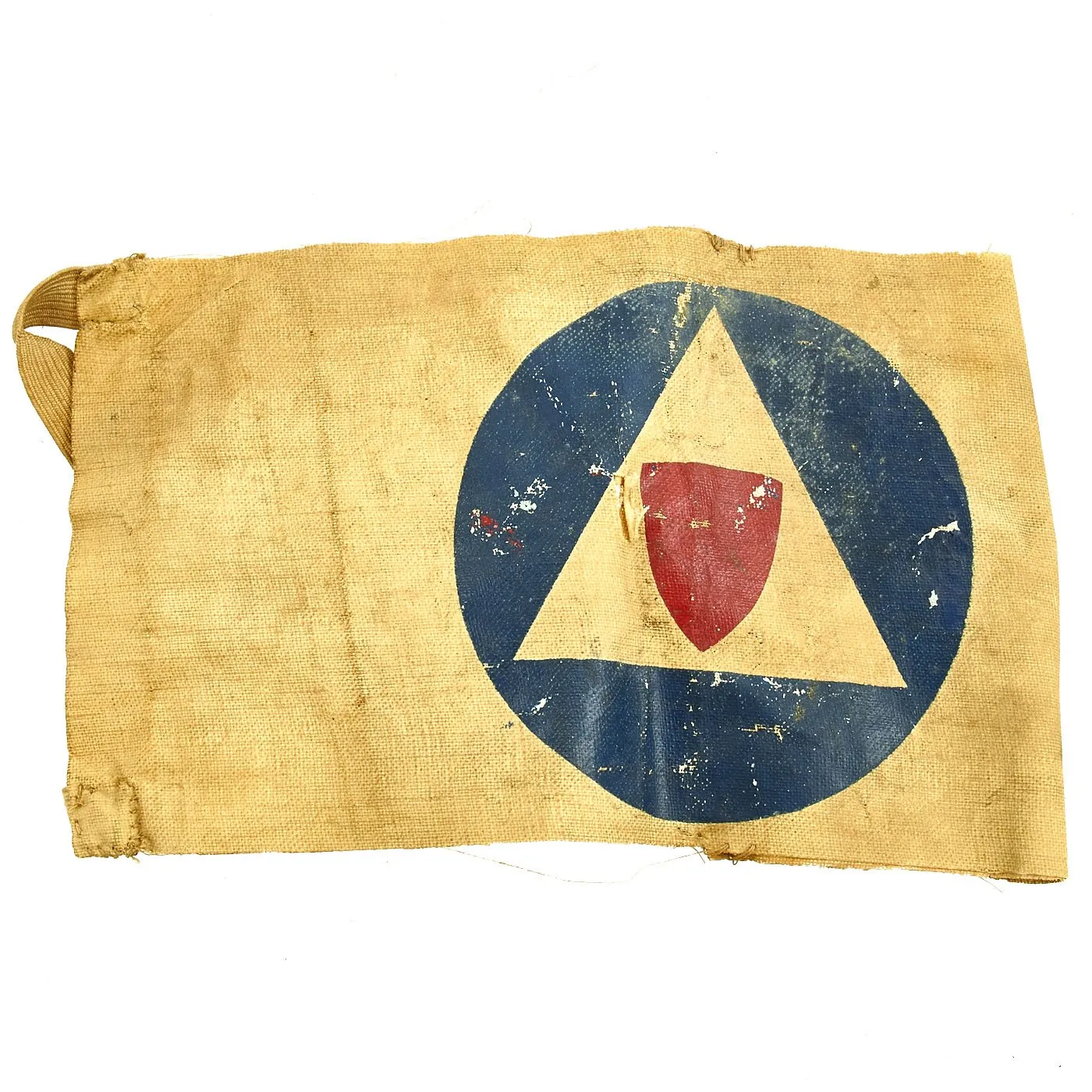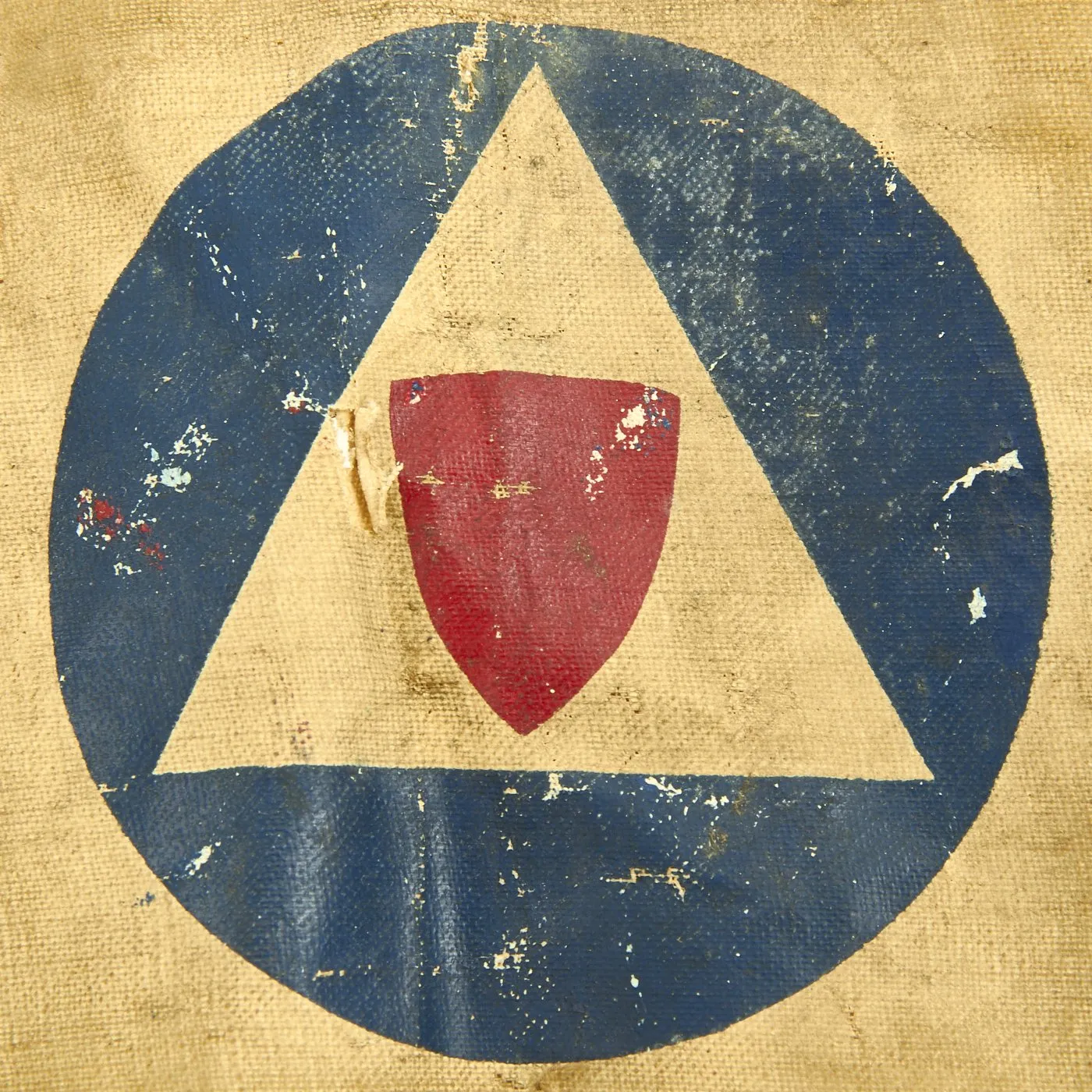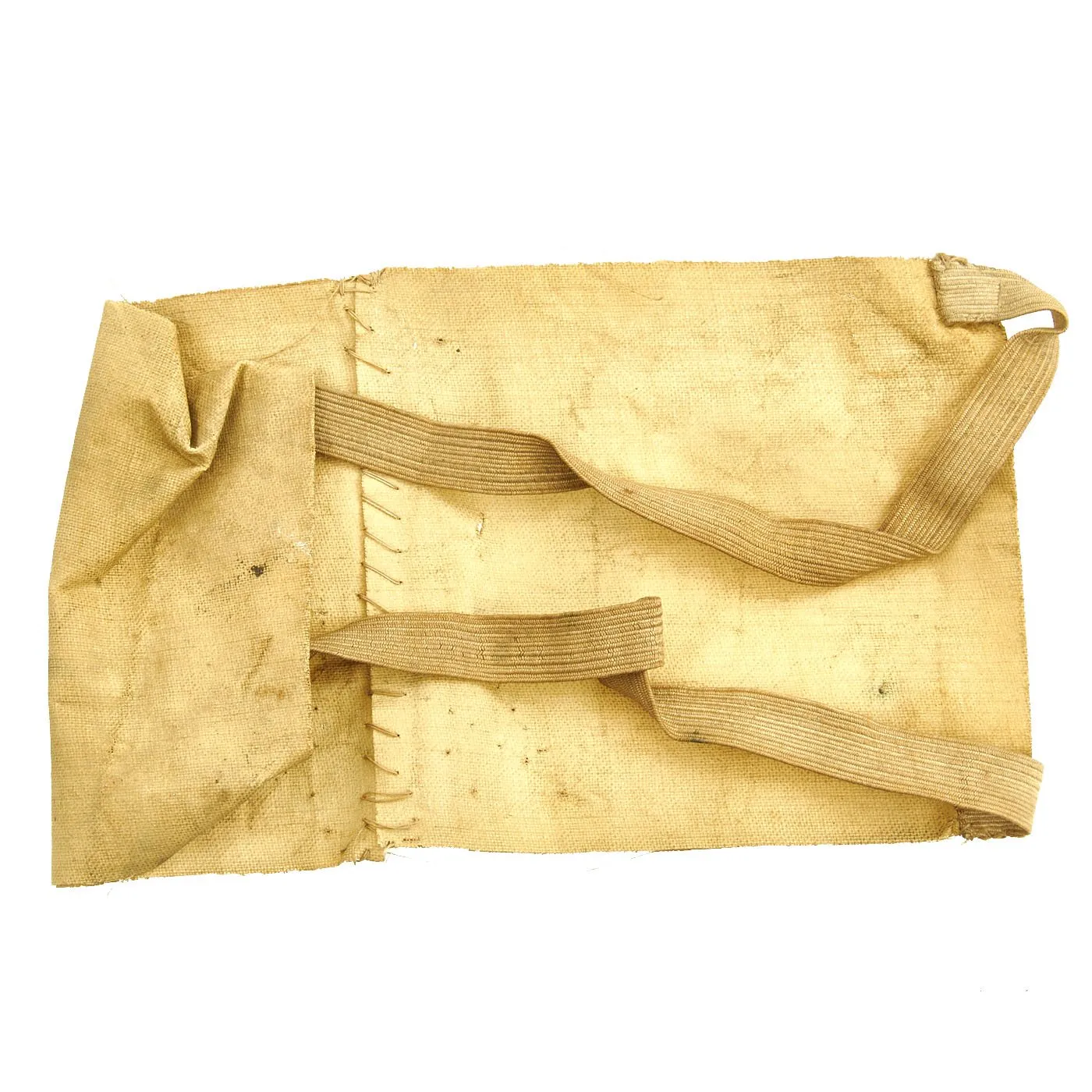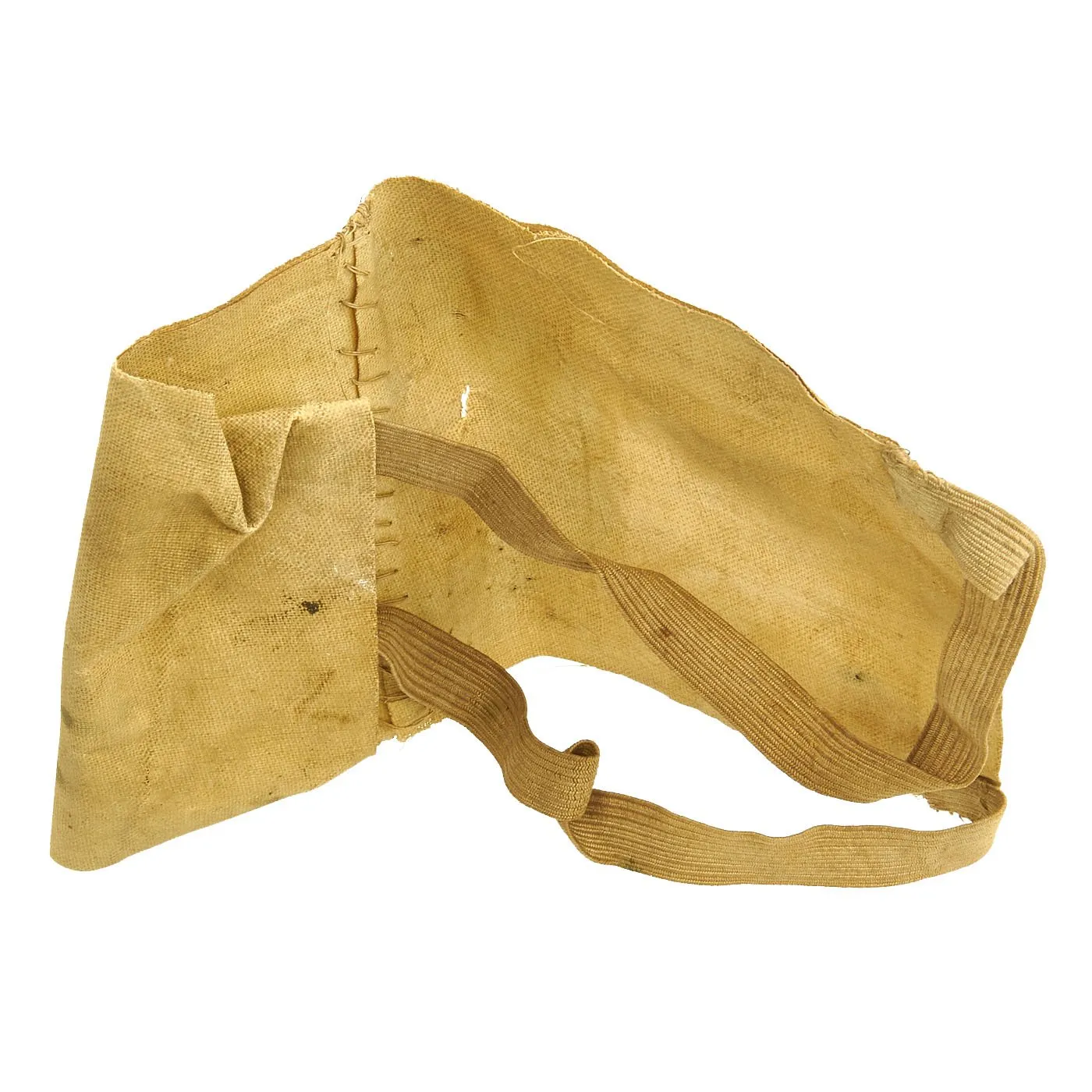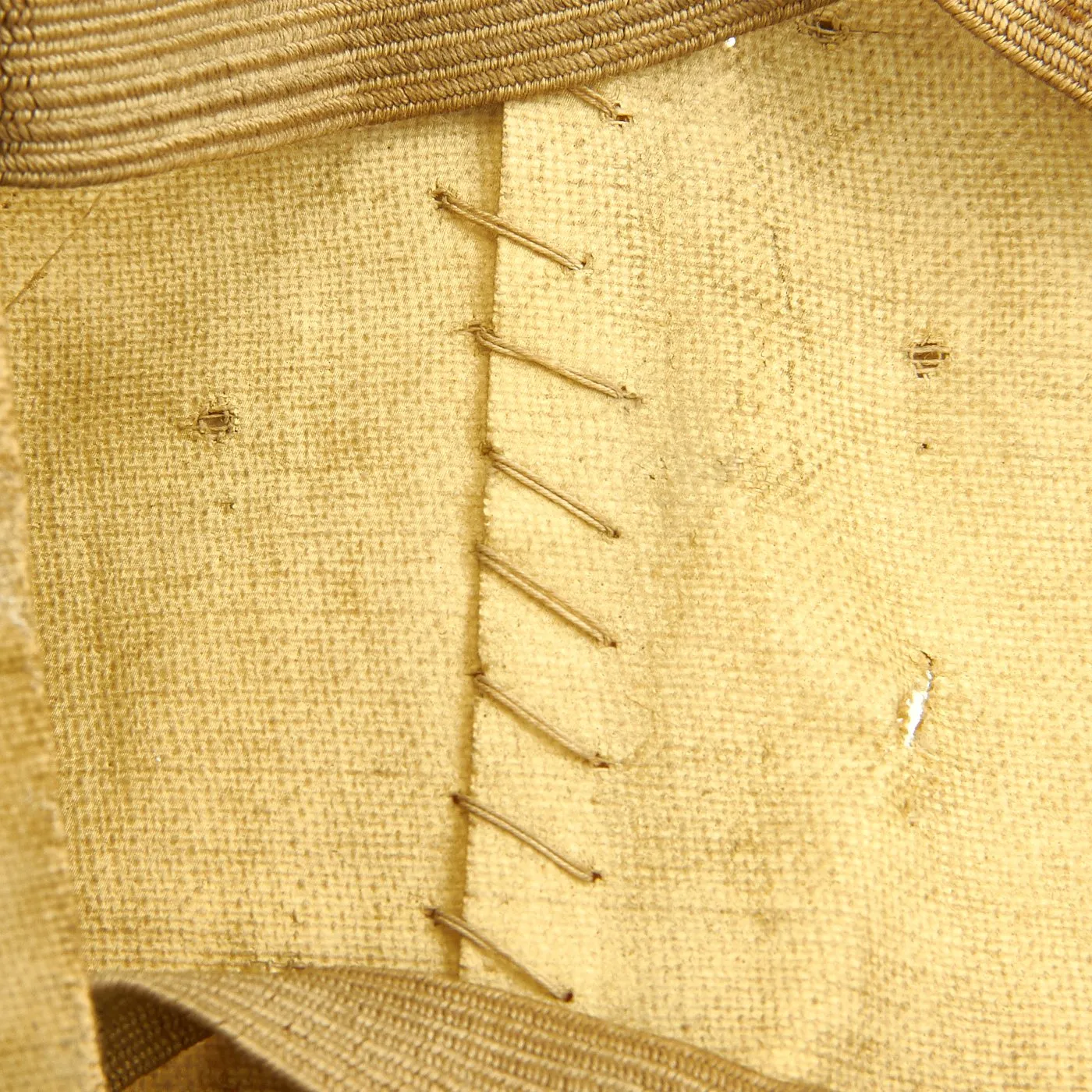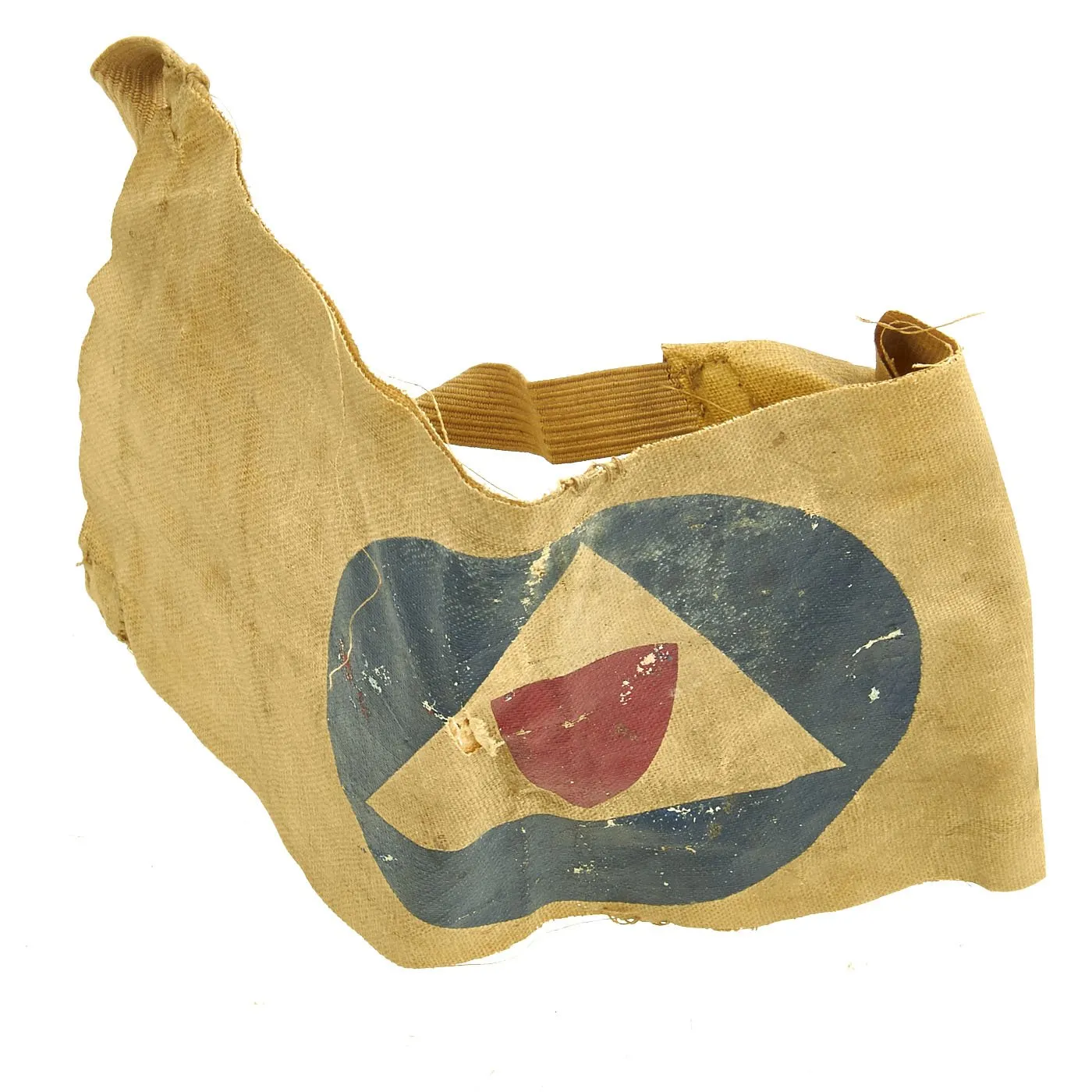Original Item: Only One Available. The insignia on the on this armband signifies the Civil Defense program specifically the United States Citizens Defense Corps Auxiliary Police. Overall condition is good with most of the original paint remaining on the original canvas.
World War II, which the United States entered after the Attack on Pearl Harbor, was characterized by a significantly greater use of civil defense. Even before the attack, the Council of National Defense was reactivated by President Roosevelt and created the Division of State and Local Cooperation to further assist the Council's efforts. Thus, the civil defense of World War II began very much as a continuation of that of World War I. Very soon, however, the idea of local and state councils bearing a significant burden became viewed as untenable and more responsibility was vested at the federal level with the creation of the Office of Civilian Defense (OCD) within the Office of Emergency Planning (OEP) in the Executive Office of the President (EOP) on May 20, 1941. The OCD was originally headed by New York Mayor Fiorello La Guardia and was charged with promoting protective measures and elevating national morale.
These organizations and others worked together to mobilize the civilian population in response to the threat. The Civil Air Patrol (CAP), which was created just days before the attack on Pearl Harbor, commissioned civilian pilots to patrol the coast and borders and engage in search and rescue missions as needed. The Civil Defense Corps, run by the OCD, organized approximately 10 million volunteers who trained to fight fires, decontaminate after chemical weapon attacks, provide first aid, and other duties. These efforts did not replace the kinds of civil defense that took place during World War I. Indeed, World War II saw an even greater use of rationing, recycling, and anti-saboteur vigilance than was seen in World War I. As the threat of air raids or invasions in the United States seemed less likely during the war, the focus on the Civil Defense Corps, air raid drills, and patrols of the border declined but the other efforts continued. Unlike the end of World War I, the US did not dismiss all its civil defense efforts as soon as World War II ended. Instead, they continued after the end of the war and served as the foundation of civil defense in the Cold War.




